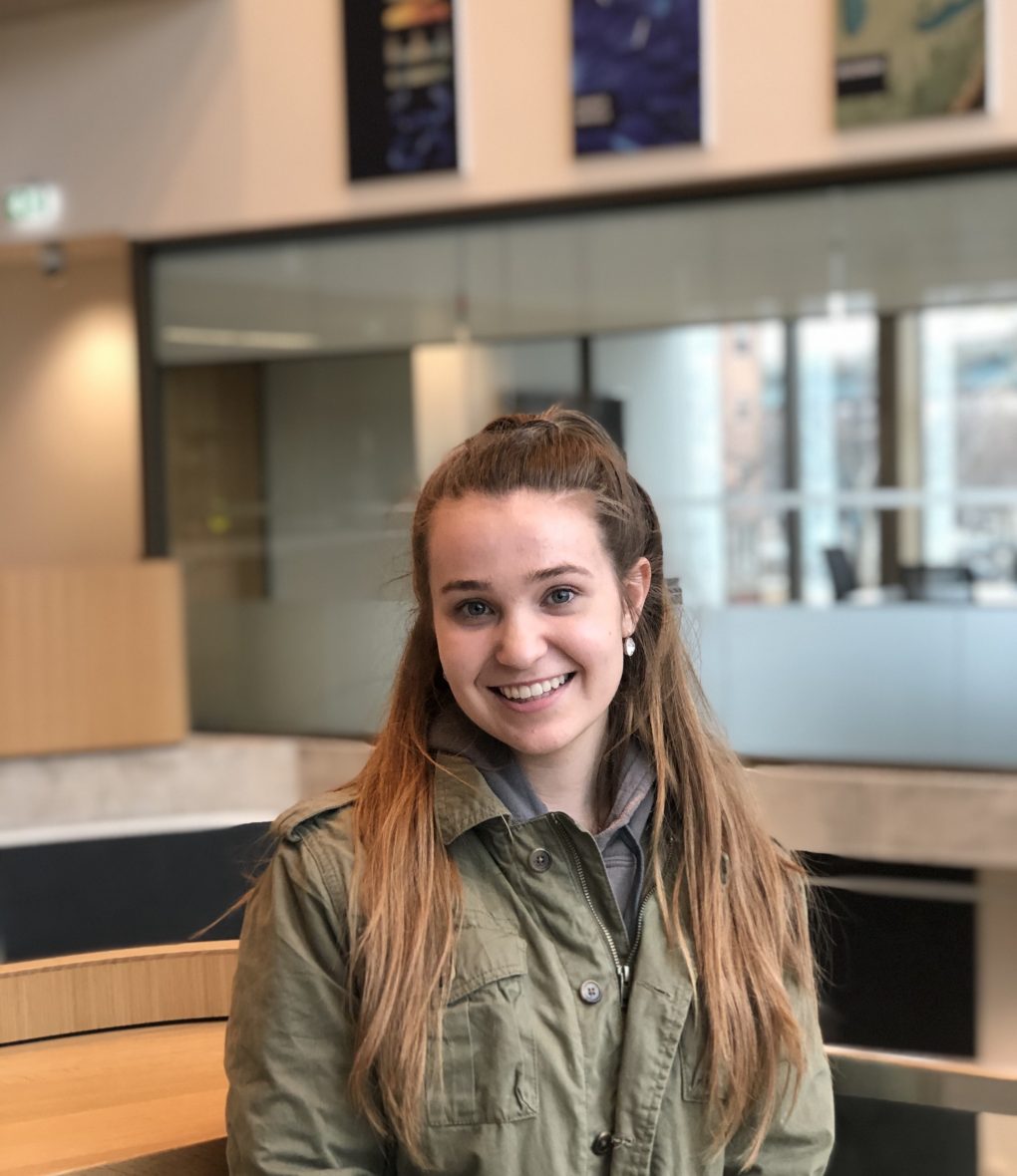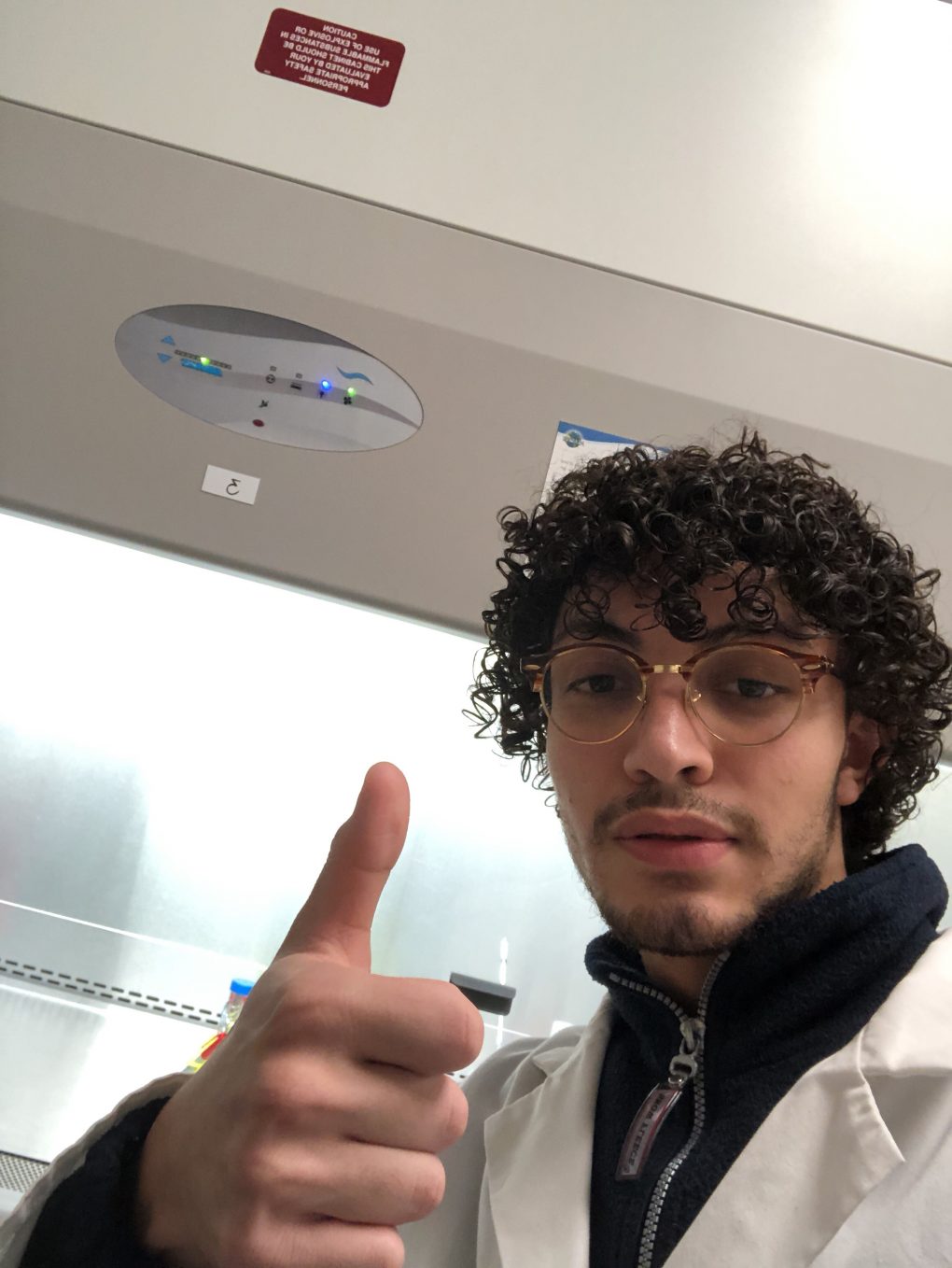Our 2021 undergraduate students have done wonderful work presenting their research results at the Ontario Biology Day, UWill Discover, and our Undergraduate Research Colloquium. Our lab has faced many challenges during this past year, the pandemic has tested our limits in many ways, but we are keeping up with our outstanding research projects. We had 5 undergrad students, some of them worked from home, while others were able to go to the lab, in one way or another we made sure they had the best research experience possible under these circumstances. As you can see below and here, they really enjoyed their time in our group.

The Effects of Dexamethasone on Breast Cancer and Chemotherapeutic Treatment
Breast cancer is the second leading cause of cancer deaths in Canadian women. A particular aggressive subset of breast cancer, triple-negative breast cancer (TNBC), accounts for approximately 15% of all breast cancer diagnoses. Unlike other subtypes, it does not express well-defined molecular targets, such as hormone receptors, that allow for targeted treatment. TNBCs are therefore treated with cocktails of potent but general cytotoxic chemical therapies which have been known to cause harsh side effects such as hypersensitivity, nausea, and vomiting. These side effects are combatted by the addition of the synthetic glucocorticoid, Dexamethasone (Dex) to the treatment regime. It is of clinical significance to understand the impact of Dex on breast cancer behavior and how it influences chemotherapy treatment and patient response. Through the completion of a literature review, the role of Dex in promoting breast cancer progression through cell survival and metastasis was evaluated. Understanding the effects of glucocorticoids, such as Dex, on breast cancer cell biology and their interaction with chemotherapeutic agents can lead to alternative therapeutic strategies and improved patient outcomes.
“Joining the Porter Lab in my second year was a highlight of my university experience. Not only did I get to meet such talented and inspiring people, but I got to learn several skills that are applicable to many life situations. Even though my thesis project was unconventional due to the pandemic, I had such amazing mentors that ensured I learned as much as I would have if I had been able to physically be in the lab. I am grateful for the experience and the people that helped me succeed, and I am honored to have witnessed the many successes of my fellow lab members. I am looking forward to continuing to hear about the amazing work the Porter Lab Team is doing.”
Katie will be starting Optometry School at Waterloo University next fall.

The Tumour Suppressor Tuberin: Coordinating DNA Damage and Mitotic Onset
The cell cycle is a series of events that involve cell growth and division. It is regulated by cyclins and CDKs, as well as checkpoints that control its progression. Tuberin (TSC2 gene) is a tumour suppressor protein that controls cell growth and proliferation. Tuberin mutations are implicated in several cancers and diseases such as tuberous sclerosis complex (TSC), a multisystem genetic disorder that is characterized by the growth of hamartomas. Previous data from our lab has demonstrated tuberin’s role in controlling mitotic onset by binding to the G2/M cyclin, Cyclin B1 according to nutrient availability. My project explores the role of the tuberin in the G2/M transition during DNA damage repair. DNA damage can result from events such as radiation, X-ray, and reactive oxygen species which activates the G2/M checkpoint to restrict mitotic onset and ensure sufficient time to repair damaged DNA. In our studies, NIH3T3 p53 positive cells were transfected with TSC2-WT or clinical TSC2 mutants that present low affinity for cyclin B1 (C696Y) or lack a GAP domain. The transfected cells were treated with etoposide, a topoisomerase II drug that induces double-stranded DNA breaks during the G2/M transition. The changes in cell cycle phases were analyzed using flow cytometry. Our preliminary results have determined that following treatment with 2µM of etoposide at 8 hours, there is a significant decrease in the % of cells at the G2/M transition in C696Y transfected cells vs. those overexpressing tuberin. This project will help expand the role of tuberin during the mitotic onset and clarify mechanisms of proliferative diseases such as TSC and cancers.
“My experience in the Porter Lab has been one that has been truly life-changing! By deciding to embark on this journey, I had the opportunity to really see science in action! Throughout our undergraduate career, we learn about these concepts and different experiments from listening to lectures and reading textbooks. Being able to go into the lab and perform my own experiments has shed light to truly how hard and rewarding science can be. The feeling of finally seeing the hard work pay off from repeating and troubleshooting an experiment countless times is one that is so fulfilling! While starting my 420 and performing my own research had its challenging moments, I was constantly supported and reassured by the rest of our lab every step of the way. My experience as a Porter Lab Rat has given me the opportunity to meet and work with so many amazing people. From Dr. Porter to the RAs, grad students, and other undergrads, everyone has been so passionate and dedicated in our pursuit of scientific advancement and it has been an honor being able to work with everyone. Joining the Porter Lab and doing a 420 has been such a gratifying learning experience for me and I highly encourage others to do the same!”
Kim is the recipient of the 1st place 10 Min Presentation for Cell and Genetics at the Ontario Biology Day. She will continue her research in our lab while coursing the 5th year undergrad studies at the University of Windsor.

The impact of HA-labeled nanoparticles on CD44+ Tumour Initiating Cells in Glioblastoma
Glioblastoma (GBM) is the most aggressive brain tumor with a median survival of only 15 months. Despite decades of research, GBM continues to pose a great therapy challenge due to its extreme genetic and phenotypic heterogeneity. The pools of stem-like tumour initiating cells (TICs) maintain and recapitulate the heterogeneity of GBM; their ability to self-renew fuels resistance to treatment and tumour recurrence. Furthermore, successful treatment of GBM is hindered by the poor penetration of the available therapeutics through a tightly regulated blood-brain barrier (BBB). Conjugated polymer nanoparticles (CPNs) are a class of nanotechnology of potential novel application for GBM treatment. CPNs can penetrate the BBB and can also be encapsulated with drugs for cargo delivery, in addition to functionalizing their surface with ligands complementary to protein receptors expressed on the glioma cell surface. In collaboration with the Rondeau- Gagné group, my project focuses on a diketopyrrolopyrrole (DPP)-based CPNs labeled with a fluorescently tagged hyaluronic acid (HA). HA is the primary ligand of the CD44 receptor present on the surface of TICs. CD44 overexpression is implicated in GBM progression and correlates with poor patient survival. Using the human U-251 MG GBM cells and patient-derived primary lines, I will investigate the effects of CPNs on CD44 signaling and stem cell properties of TICs in vitro as well as in vivo, using a Zebrafish model. Collectively, these results will not only further validate the CPN system as a potential future anti-GBM therapy but also contribute to a better understanding of CD44 biology in GBM.
“When I joined the Porter Lab at the start of my second year, I had no idea that it would end up being both the highlight of my undergraduate journey and the most rewarding experience I’ve had to date. Before joining the lab, I wasn’t familiar with the research at all, but by the end of my fourth year, it’s safe to say that research has become a genuine, lifelong passion of mine. My time in the lab has made it clear that I want to pursue a career involving research in the future. It’s been an opportunity for me to both learn and develop many valuable skills and traits like working as a team, problem-solving, and patience, as well as responding to failure and keeping determination. I’ve learned an incredible amount of information during my time in the lab and the desire to learn only continues to grow. Research can be very time-consuming, and it does require a lot of dedication and effort, but I can confidently say that I’d repeat my experience in the Porter Lab over and over again with no complaints. The time I spent here has felt like my family away from home. A big part of my research experience revolved around building relationships with my mentors, graduate students, and fellow lab mates, and it has been a surreal experience. These are relationships that I’ll be beyond grateful for forever; I’ll always remember being a Porter Lab Rat. I’ve caught myself thinking about how amazing it is to be able to contribute to cancer research and work towards elevating the health of our community. Even if my actions seem minuscule, I recognize now that these little steps are all vital in understanding the bigger picture. The Porter Lab is in good hands – I know every individual member is going to make some very important contributions to the field of research, and I hope I can be there to celebrate these accomplishments with them all!”
Sami is the recipient of 1st place undergraduate speaker at UWill Discover conference, NSERC USRA 2020 summer, and 2021 summer. He will continue his research in our lab during the summer.
